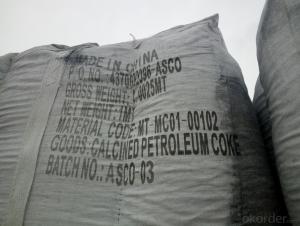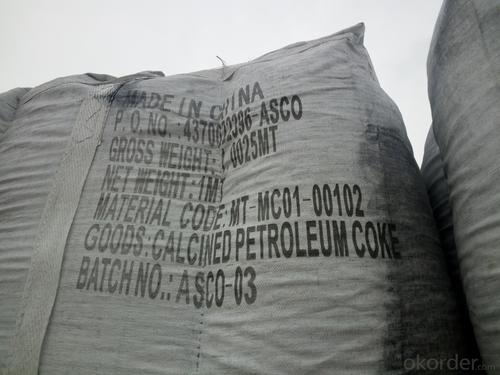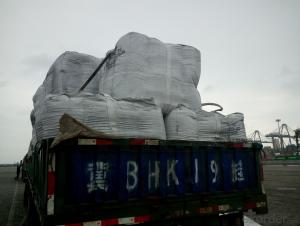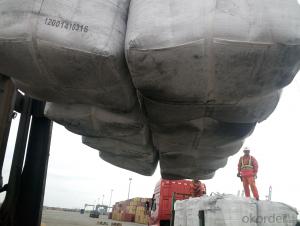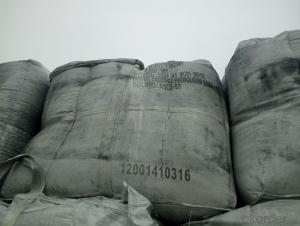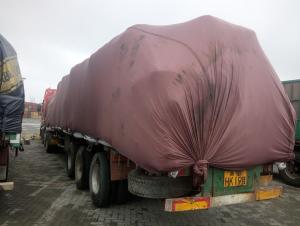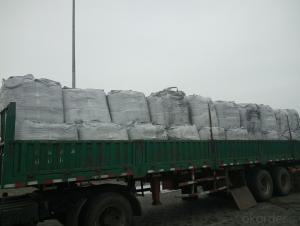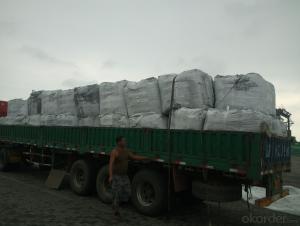Calcined Pitch Coke with Ash 0.5 percent max used as Carbon Raiser
- Loading Port:
- Tianjin
- Payment Terms:
- TT OR LC
- Min Order Qty:
- 21 m.t.
- Supply Capability:
- 8000 m.t./month
OKorder Service Pledge
OKorder Financial Service
You Might Also Like
Introduction
Pitch Coke/Coal Tar Pitch is a kind of black brittleness and blocky piece, lustrously at normal temperature. It has special odour and poisonous and can be easily flame when melting, second-grade inflammable solid.
Pitch Coke/Coal Tar Pitch is obtained from powerfully processed coal tar. Compared to petroleum asphalt, the adhesiveness is better. Coal Tar Pitch is high quality tar production with high fixed carbon. It has excellent adhesion, waterproofing and resistance against seawater, oil and various chemicals. In these properties, it is much better than petroleum asphalt tar.
It can be used to produce painting, electrode, pitch coke, and tar felt. It also can be used as fuel and the raw material of asphalt carbon black.
Features:
The morphology, chemistry and crystallinity of recarburisers have a major impact on the overall casting cost. The combined application and cost benefits, which are derived through the use of Desulco, enable foundries to manufacture castings in a highly cost effective manner.
reduces
Recarburiser consumption
Power consumption
Inoculant consumption
MgFeSi consumption
Furnace refractory wear
Scrap rate
Tap to tap time
Slag inclusions risk
Chill
increases
Casting microstructure
Productivity
Process consistency
Carbon Recovery
Compared with calcined petroleum coke, acetylene coke and
graphite electrode scrap, Desulco yields the highest carbon
recovery and fastest dissolution time
Specifications:
CPC | |||
F.C.% | 98.5MIN | 98.5MIN | 98MIN |
ASH % | 0.8MAX | 0.8MAX | 1MAX |
V.M.% | 0.7 MAX | 0.7 MAX | 1 MAX |
SULFUR % | 0. 5MAX | 0. 7MAX | 1MAX |
MOISTURE % | 0.5MAX | 0.5MAX | 1MAX |
Pictures:
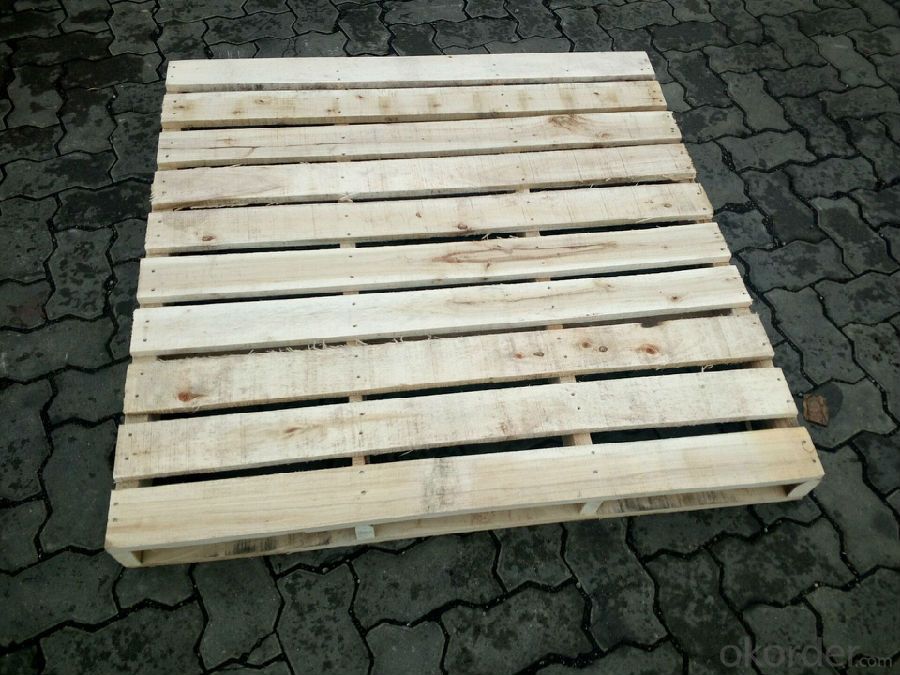
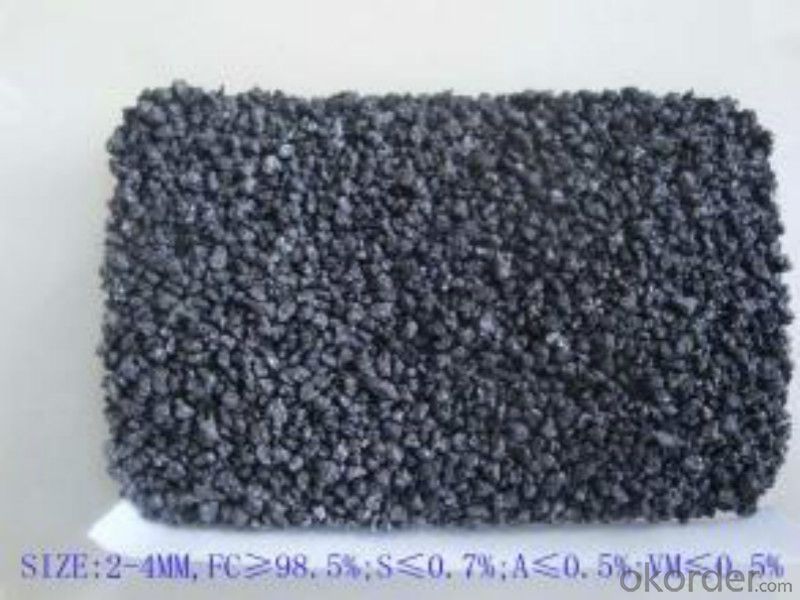

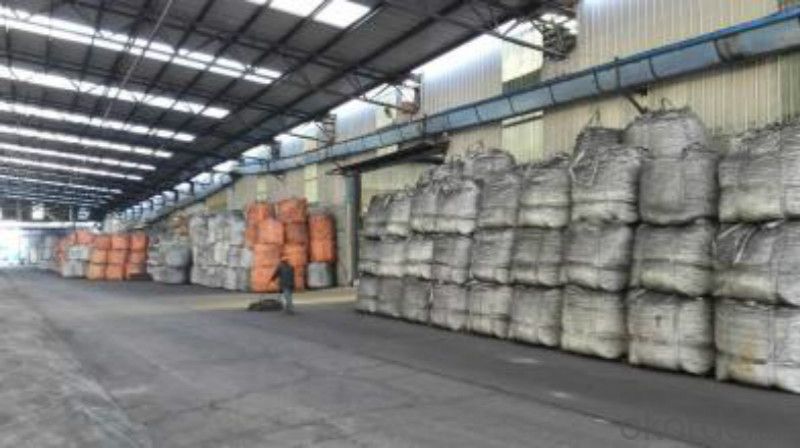
FAQ:
1.MOQ:2 Containers |
2.Size:1-3mm,1-5mm,2-6mm,3-5mm and as the customer's requirement |
3.Packing: 1 ton jumbo bag or 25kgs paper in bag |
4.Payment:T/T or L/C at sight |
5.Delivery time: within 15 days after receiving the deposit |
6.Usage: it is as carbon raiser,widely used in steelmaking,casting,casting iron,steel foundry,aluminum metallury. |
- Q: What is the greenhouse effect?
- The greenhouse effect refers to the process by which certain gases in the Earth's atmosphere trap heat from the sun and prevent it from escaping back into space. This natural phenomenon is crucial for maintaining the planet's temperature within a range suitable for life. However, human activities, such as burning fossil fuels and deforestation, have intensified the greenhouse effect, leading to global warming and climate change.
- Q: How does carbon impact soil health?
- Carbon plays a crucial role in maintaining and improving soil health. It is a key component of organic matter, which is essential for fertile and productive soils. When carbon is added to the soil through the decomposition of plant and animal residues, it helps to improve the soil structure, water holding capacity, and nutrient availability. One of the primary ways carbon impacts soil health is through its ability to enhance soil structure. Carbon binds with soil particles to form aggregates, which create pore spaces in the soil. These pore spaces allow for better aeration, water infiltration, and root penetration. Good soil structure promotes the growth of beneficial soil organisms like earthworms and microorganisms, which further contribute to soil health. Carbon also plays a crucial role in improving the water holding capacity of soils. Organic matter, rich in carbon, acts as a sponge by holding moisture and preventing water runoff. This is particularly important in arid or drought-prone regions where water scarcity is a concern. Improved water retention in soils not only helps plants withstand dry periods but also reduces erosion and nutrient leaching. Furthermore, carbon is a vital nutrient for soil microbes. Microorganisms, such as bacteria and fungi, break down organic matter, releasing nutrients that are essential for plant growth. Carbon-rich soils provide a favorable environment for these microorganisms to thrive, leading to increased nutrient availability for plants. Additionally, as microorganisms decompose organic matter, they release beneficial substances like enzymes and hormones that further support plant growth and overall soil health. In conclusion, carbon greatly impacts soil health by improving soil structure, enhancing water holding capacity, and promoting nutrient availability. Therefore, managing and increasing carbon content in soils through practices like adding organic amendments, cover cropping, and reducing tillage can greatly benefit agricultural productivity and sustainability.
- Q: They include a cementite, two cementite, three cementite, eutectic cementite and eutectoid cementite, and compare their temperature, composition and morphology
- Three: cementite in iron graphite in the phase diagram of F (Fe) + Fe3C two-phase region precipitation of Fe3C is three times the cementite formation temperature in the eutectoid temperature (727 DEG C), morphology is fine flake or granular.Eutectic cementite: Fe3C body in eutectic (A (Fe) + Fe3C) formed at eutectic temperature (1148 DEG C). The morphology is lamellar eutectic morphology. The carbon content is about 4.3%.Eutectoid cementite: Fe3C in eutectoid (F (Fe) +Fe3C) formed at eutectoid temperature (727 DEG C), characterized by flaky eutectoid morphology. The carbon content is about 0.77%.
- Q: Why is the longer the carbon chain, the better the hydrophobic properties?
- Alkyl chains, low in polarity, insoluble in water...... Release53 (TA station) of all alkanes alkane chain containing even chemical bonds are sigma bond, charge distribution in the molecule is not very uniform, the movement process can produce instantaneous dipole moment, but the total dipole moment is zero, non polar molecules. According to the similarity principle of compatibility, alkane in general can only be dissolved in carbon tetrachloride, like hydrocarbons and other non polar solvent, so the more you long alkane chain, as hydrophobic groups, then you must material hydrophobicity and better advice and look at textbooks still need some basic theory of organic.
- Q: How is carbon stored in the Earth's crust?
- Various forms of carbon are stored in the Earth's crust through different geological processes. One primary method of storage involves the creation of sedimentary rocks like limestone, dolomite, and chalk. These rocks consist mainly of calcium carbonate, which comes from the shells and skeletons of marine organisms that existed millions of years ago. As time passes, these remains gather on the ocean floor and become compressed and cemented, effectively trapping carbon within them. Another way carbon is stored in the Earth's crust is through carbonation. Carbon dioxide (CO2) from the atmosphere can dissolve in water and react with specific minerals, like basalt, leading to the formation of carbonate minerals such as calcite or magnesite. This natural process occurs through chemical weathering and volcanic activity, aiding in the sequestration of carbon within the Earth's crust. Moreover, organic carbon takes the form of fossil fuels, including coal, oil, and natural gas. These fuels are the remnants of ancient plants and microorganisms that lived and perished millions of years ago. Over time, the organic matter becomes buried and subjected to high pressure and temperature, resulting in a process known as diagenesis, which eventually converts it into fossil fuels. These deposits serve as carbon reservoirs within the Earth's crust. In summary, the Earth's crust acts as a significant carbon sink, efficiently storing carbon through processes such as the formation of sedimentary rocks, carbonation, and the accumulation of fossil fuels. However, it is crucial to note that human activities, particularly the combustion of fossil fuels, are releasing substantial amounts of stored carbon into the atmosphere, contributing to global climate change.
- Q: But their chemical symbols are different, so they are different elements, different substances, but they feel the same thing... Tangled up ~!
- No one is the same. Lead is poisonous, and pencil lead is lead. The structure of carbon is the same as that of diamonds. Generally speaking, they are of structure, density and composition. No one is the same
- Q: How is carbon used in the production of pigments?
- The ability of carbon to create vibrant and deep colors makes it a common choice for pigments. These pigments, also known as carbon blacks, are produced by incomplete combustion of hydrocarbons like natural gas or petroleum. The resulting carbon particles are then processed and purified to create a fine powder that serves as a pigment. Various industries, including inks, paints, plastics, and cosmetics, utilize these carbon-based pigments. In the ink production process, carbon black is frequently added to enhance color intensity and opacity. Similarly, in the manufacturing of paints and coatings, it is used to provide a rich and deep black color. Plastics can be enhanced by adding carbon black, which improves their UV resistance, making them more durable and long-lasting. This is especially crucial for outdoor applications where exposure to sunlight can lead to fading and degradation. Carbon-based pigments are also widely used in the cosmetics industry. They are incorporated into products like eyeliners, mascaras, and lipsticks to create intense black or dark shades. The stability and consistent color delivery of carbon black pigments make them a preferred choice in cosmetics. In summary, the ability of carbon to create vibrant and deep colors makes it extensively used in pigment production. Carbon-based pigments have diverse applications in various industries, enhancing color intensity, providing UV resistance, and delivering rich black shades.
- Q: What are the carbon monoxide collection methods?
- Drainage method.Because the density of carbon monoxide is almost the same as the density of air, it is difficult to obtain pure carbon monoxide by exhaust air.
- Q: What are carbon nanomaterials?
- Carbon nanomaterials are a class of materials that are composed of carbon atoms arranged in various structures at the nanoscale. These structures can include carbon nanotubes, fullerenes, and graphene. Carbon nanotubes are cylindrical structures made up of rolled-up sheets of graphene, while fullerenes are closed-cage molecules consisting of carbon atoms. Graphene, on the other hand, is a single layer of carbon atoms arranged in a hexagonal lattice. Carbon nanomaterials possess unique properties that make them highly desirable for a wide range of applications. They exhibit exceptional mechanical strength, high electrical and thermal conductivity, as well as excellent chemical stability. These properties arise from the strong covalent bonds between carbon atoms and the unique arrangements of these atoms in the nanoscale structures. Due to their remarkable characteristics, carbon nanomaterials have found numerous applications in various fields. They are used in electronics and computing devices, where their high electrical conductivity and small size make them ideal for creating faster, smaller, and more efficient components. Carbon nanotubes have also been utilized in composite materials to enhance their mechanical strength and durability. Furthermore, carbon nanomaterials have shown promise in the field of medicine and healthcare. They can be used for drug delivery systems, where they can encapsulate and transport drugs to specific targets in the body. Carbon nanomaterials have also been investigated for their antibacterial properties, making them potential candidates for developing antimicrobial coatings and surfaces. Overall, carbon nanomaterials are a diverse class of materials with exceptional properties that have led to numerous exciting applications in various industries. As research continues, their potential uses are likely to expand, revolutionizing fields such as electronics, medicine, and materials science.
- Q: What is carbon monoxide poisoning?
- Carbon monoxide poisoning is a potentially deadly condition that occurs when an individual inhales or is exposed to high levels of carbon monoxide gas. Carbon monoxide is a colorless, odorless, and tasteless gas that is produced from the incomplete combustion of carbon-based fuels such as gasoline, natural gas, coal, and wood. When carbon monoxide is inhaled, it enters the bloodstream and binds to hemoglobin, the molecule responsible for carrying oxygen throughout the body. This binding process prevents oxygen from being adequately delivered to vital organs and tissues, leading to oxygen deprivation or hypoxia. The symptoms of carbon monoxide poisoning can vary depending on the level and duration of exposure, but they often resemble those of the flu, including headache, dizziness, weakness, nausea, vomiting, confusion, and loss of consciousness. Prolonged exposure to high levels of carbon monoxide can result in severe brain damage, organ failure, and even death. It is crucial to take immediate action if carbon monoxide poisoning is suspected. This includes removing oneself from the source of exposure, seeking fresh air, and contacting emergency services for medical attention. Additionally, it is essential to identify and address the source of carbon monoxide, such as faulty heating systems, blocked chimneys, or malfunctioning appliances, to prevent further exposure and ensure the safety of the environment. Prevention is key in avoiding carbon monoxide poisoning. Regularly maintaining and inspecting fuel-burning appliances, installing carbon monoxide detectors in homes and buildings, and ensuring proper ventilation are vital steps to minimize the risk of exposure. Education and awareness about the dangers of carbon monoxide and the necessary precautions can help save lives and protect individuals from this silent killer.
Send your message to us
Calcined Pitch Coke with Ash 0.5 percent max used as Carbon Raiser
- Loading Port:
- Tianjin
- Payment Terms:
- TT OR LC
- Min Order Qty:
- 21 m.t.
- Supply Capability:
- 8000 m.t./month
OKorder Service Pledge
OKorder Financial Service
Similar products
Hot products
Hot Searches
Related keywords
